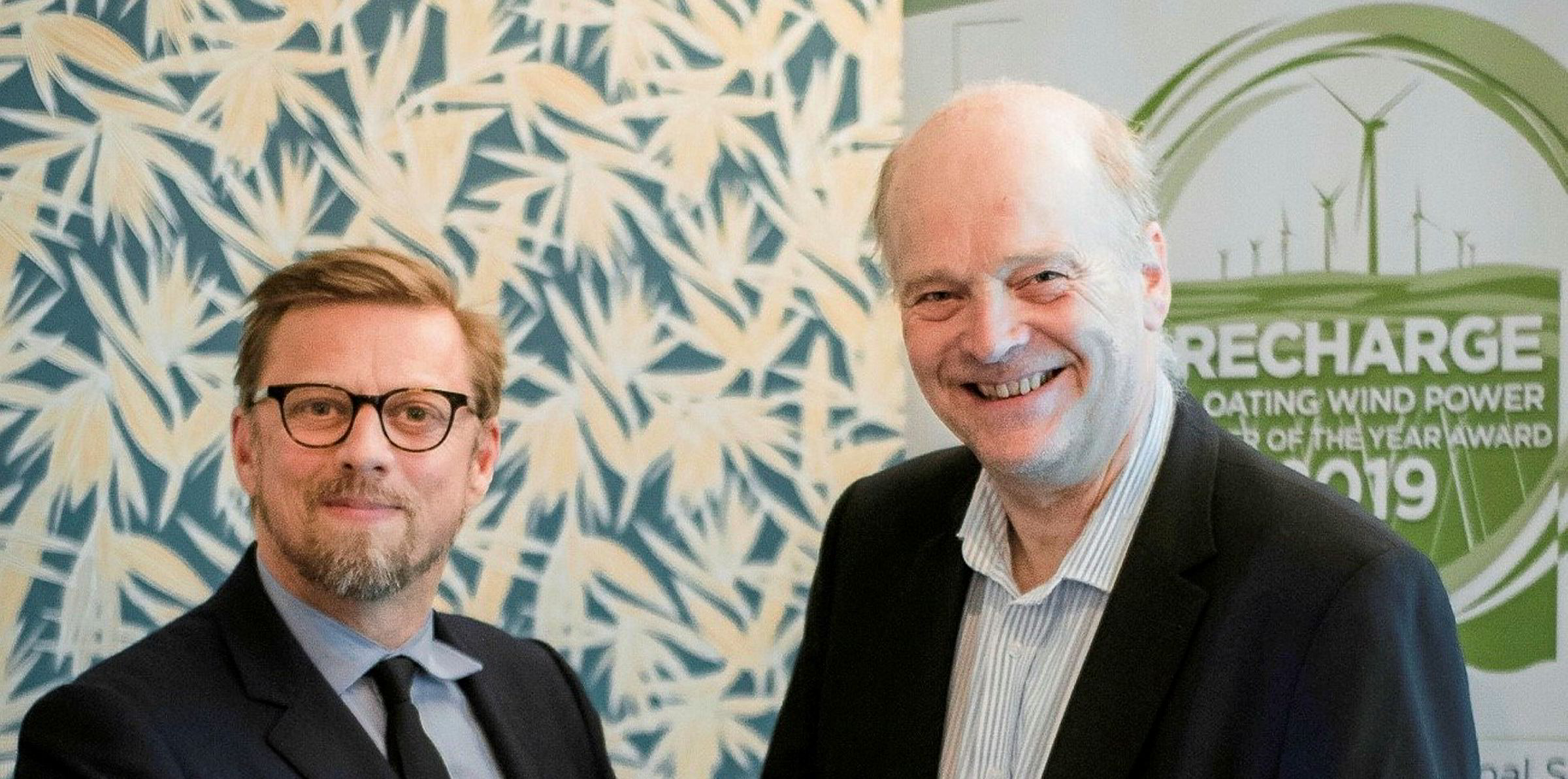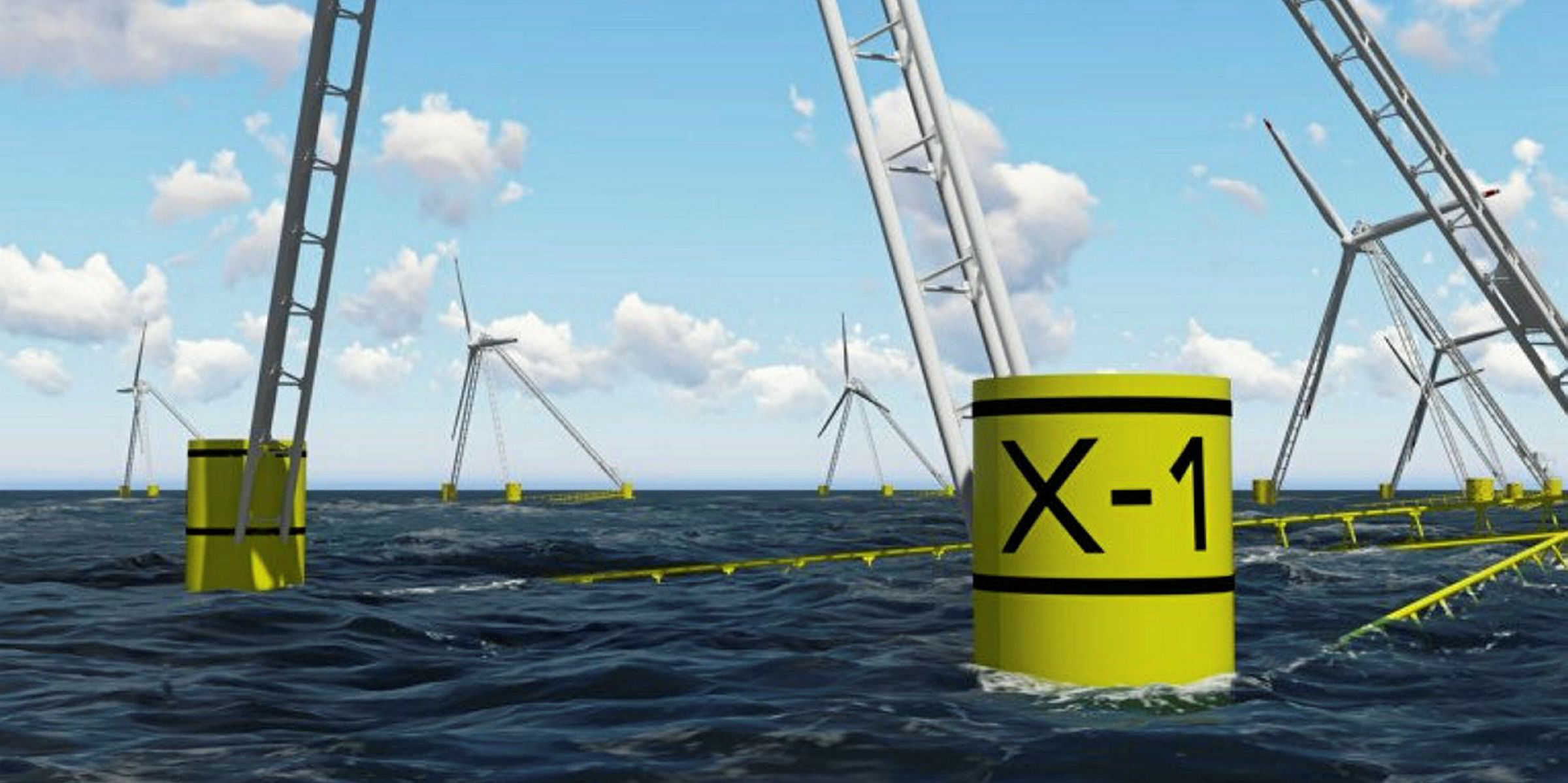Wind pioneer Henrik Stiesdal has been laurelled the 2019 Recharge Floating Wind Power Player of the Year, in an award ceremony yesterday in Montpellier, France, on the eve of the world largest sector conference, FOWT.
Stiesdal, who invented one of the ‘Danish Concept’ turbines that went on to dominate the industrial landscape through the 1980s, as well as 175 inventions and more than 650 patents in various areas of the on- and offshore wind power sectors, won the prize for his paradigm-shifting floating wind turbine design, TetraSpar, a prototype of which is now on track for installation off Norway next year.
Recharge Editor-in-Chief Darius Snieckus praised Stiesdal as a “boundless creative force” in the wind power industry who with the TetraSpar, being developed with Shell and Innogy, was helping the sector “completely re-think” floating wind as it moves toward commercialisation in markets around the world.
To say the wind industry is indebted to Henrik is a truism that grows truer by the day.
“When Henrik ‘retired’ from his role as CTO of Siemens Wind Power [now Siemens Gamesa Renewable Energy] in 2014, he set to work on a number of new projects, one of which was the TetraSpar, which will has gone from back-of-envelope sketch to full-scale floating wind prototype in some five years,” said Snieckus announcing the award, now in its second year.
“The TetraSpar is extraordinary not only its new-look design with a retractable floating keel that will allow it to be built in shallow-water quays but installed in deep offshore waters, but also for the fact that it has been designed with industrialisation at its heart, with all component parts able to be fabricated in just about any factory, the whole unit assembled in port, and then floated out to site serially.
“To say the wind industry is indebted to Henrik is a truism that grows truer by the day – and the TetraSpar, which is in the frame for projects from South Korea to the US West Coast and most maritime regions between, along with a prototype project off Norway, is the latest evidence of this.”
Accepting the award, Stiesdal said: “I'm grateful and honoured by this award. I'm also grateful to be able to be part of something so meaningful [in floating wind power]. When you look at the news about climate change, there's nothing more meaningful than what we are all doing.”
Walter Musial principal engineer and manager of the offshore wind department at the US National Renewable Energy Laboratory, Paul de la Guérivière, CEO of French floating wind pioneer Ideol, and Yoshinori Ueda, general manager of the Japan Wind Power Association, were the other nominees for this year’s award, sponsored by Ideol, Senvion, Seaway 7 and Le Béon.
Commercial-scale floating wind projects are today being advanced off Europe, Asia and the US, next-generation designs moving toward testing, and even the World Bank aiming to underwrite projects in emerging markets such as Brazil, South Africa and elsewhere, while Ireland has its flagship prototype project underway, and Greece is considering a first industrial-scale development.
Expectatations that the world's floating wind fleet could expand from is current prototypes and array-scale projects to a global industry with 15GW of installed capacity by 2030 are thought to now be potentially under-ambitious.
Last year, Finn Gunnar Nielsen, who led the R&D team at Norwegian oil & gas group Statoil (now Equinor) that designed the world's first industrial-scale floating wind unit, the Hywind Demo, was awarded the inaugural Recharge floating wind prize at a ceremony in Marseille.
The FOWT conference and exhibition, now in its sixth year, takes place for the first time in Montpellier from 24-26 April.


